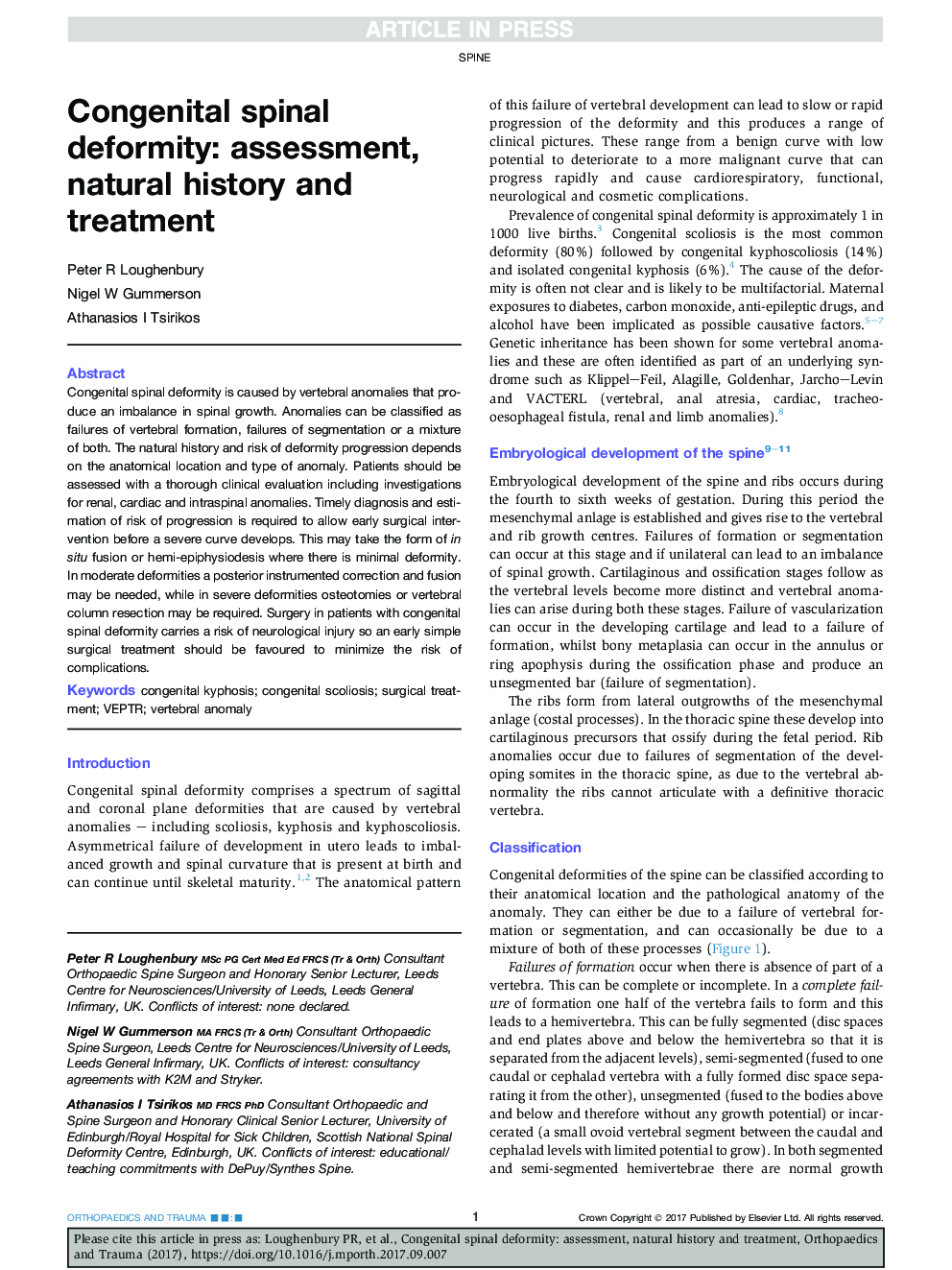| Article ID | Journal | Published Year | Pages | File Type |
|---|---|---|---|---|
| 8801991 | Orthopaedics and Trauma | 2017 | 6 Pages |
Abstract
Congenital spinal deformity is caused by vertebral anomalies that produce an imbalance in spinal growth. Anomalies can be classified as failures of vertebral formation, failures of segmentation or a mixture of both. The natural history and risk of deformity progression depends on the anatomical location and type of anomaly. Patients should be assessed with a thorough clinical evaluation including investigations for renal, cardiac and intraspinal anomalies. Timely diagnosis and estimation of risk of progression is required to allow early surgical intervention before a severe curve develops. This may take the form of in situ fusion or hemi-epiphysiodesis where there is minimal deformity. In moderate deformities a posterior instrumented correction and fusion may be needed, while in severe deformities osteotomies or vertebral column resection may be required. Surgery in patients with congenital spinal deformity carries a risk of neurological injury so an early simple surgical treatment should be favoured to minimize the risk of complications.
Related Topics
Health Sciences
Medicine and Dentistry
Orthopedics, Sports Medicine and Rehabilitation
Authors
Peter R. Loughenbury, Nigel W. Gummerson, Athanasios I. Tsirikos,
